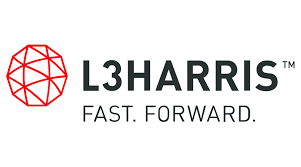Global Aviation Security Market – 2009 – 2018
Check out our latest research on this topic: Global Homeland Security & Public Safety Market – 2017-2022
Before the financial crisis of 2008, the aviation industry was poised to post a global growth of 5% CAGR for passenger and cargo traffic. While the recession will definitely affect aviation industry, this impact will be offset to some degree by lower fuel prices. So, the overall impact of the recession on the aviation security market is likely to be less severe, especially in the long run.
As a service to our customers we provide here excerpts from our Global Aviation Security Market 2009-2018, a subject that is covered in our new Global Homeland Security, Homeland Defense & Intelligence Markets Outlook 2009-2018.
Aviation Industry Terror Threats
Civil aviation faces multiple, complex challenges and threats, and must adapt to their evolving nature. The greatest current threat, as demonstrated by the Heathrow plot of August 2006, reminds us that terrorism is the most prominent of these threats, and therefore must stay the focus of our counter-threat strategy.
Globalization, technological advances, the proliferation of new aviation terror technologies, and the emergence of terrorism as a global phenomenon. have enabled threats to civil aviation to extend in reach, accelerate in speed, and increase in potential impact. Aviation is a global enterprise with a distributed infrastructure and multiple access points. Successful attacks on civil aviation can inflict mass casualties and grave economic damage, and attract significant public attention because of the impact on a modern transportation system.
Intelligence on threats to civil aviation plays a critical role in assessing terrorist groups’ intentions and capabilities and requires regular updating and review to ensure that governments, the private sector, and the international community are taking appropriate countermeasures. However, even the best intelligence will not uncover every specific terrorist plot, because of terrorists’ distributed network, and their efforts at operational secrecy.
Threats focused on civil aviation can be analyzed in two ways: by originator and by targets and tactics.
There are three primary categories of threats:
-
to and from aircraft;
-
to the aviation infrastructure;
-
from hostile exploitation of cargo.
Threats to and from aircraft can be disaggregated into three categories:
- Large passenger aircraft.
- Cargo aircraft.
- Small aircraft, including light private and corporate aircraft, and helicopters…
Our analysis and forecast of the evolving needs and resulting potential aviation security markets covers, among others, the following sectors:
1. Global Aviation Security Market 2009-2018
1.1. Aviation Security Market Scope
1.2. Aviation Industry Terror Threats
1.3. Aviation Security Counter-Terror Tactics and Mitigation
1.4. The World’s Largest Airport Markets
1.5. Aviation Passenger Screening Technologies & Market Outlook 2009-2018
1.6. Checked Baggage Screening Market
1.7. Air Cargo Screening Technologies & Markets
1.8. Private Jet Security Programs
1.9. Counter MANPAD Technologies & Markets
1.10. Airport Perimeter Security Technologies & Markets
1.11. Aviation Security Market Drivers
1.12. Aviation Security Market Inhibitors
1.13. Aviation Security Sub-Market Growth Sectors
1.14. Aviation Security Business Opportunities & Challenges
1.15. Aviation Security Market Dynamics
1.16. Global Aviation Security Market Outlook: 2009-2018
1.16.1. Global Aviation Security Market Outlook: 2009-2018
1.16.2. The Aviation Security Market by Geographical Regions 2008 & 2018














